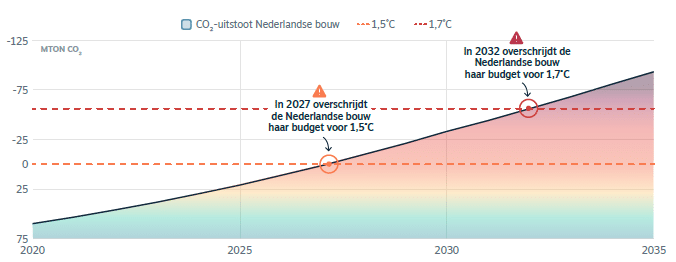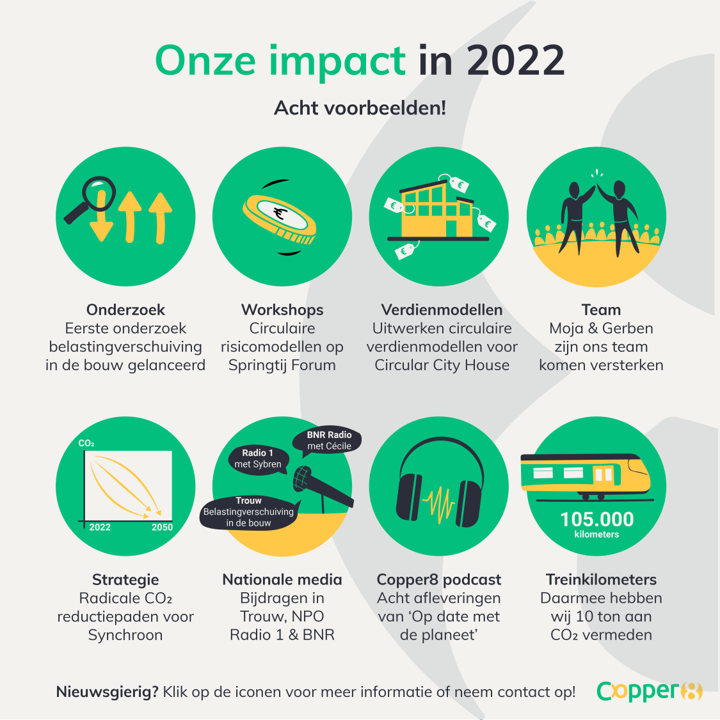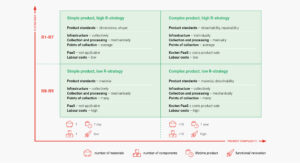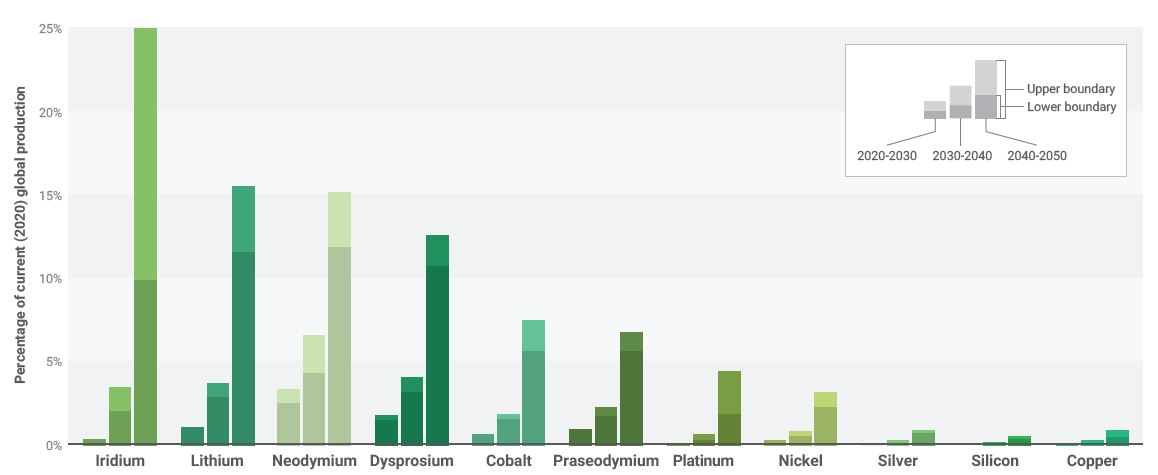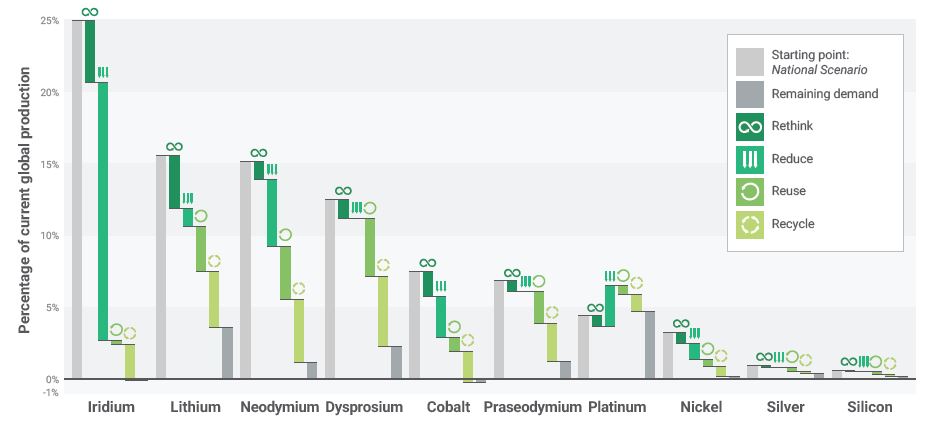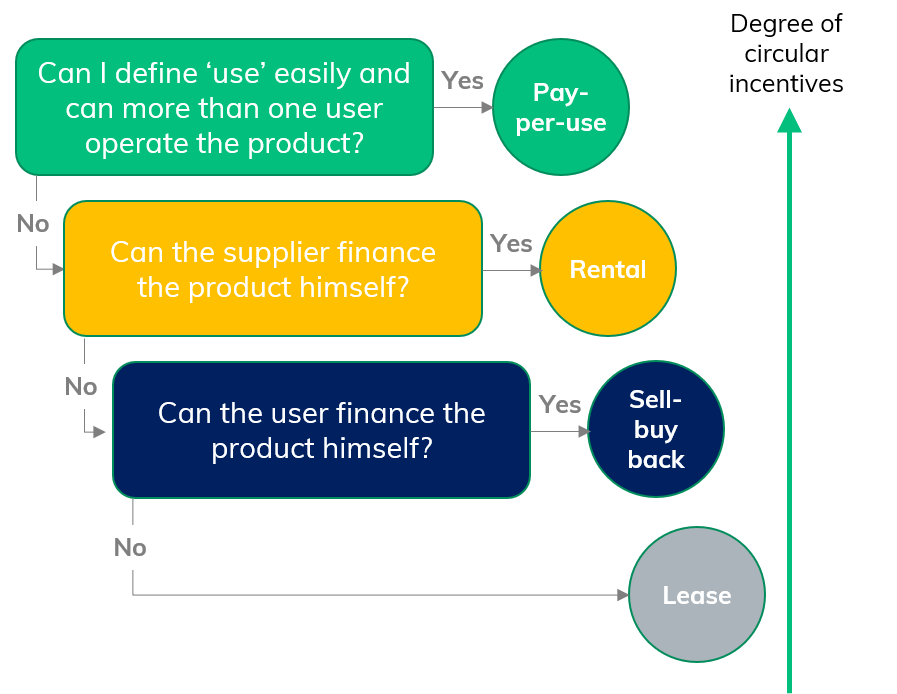Welke indicatoren zijn leidend?
In deze position paper pleiten DGBC en Gideon voor een aantal bewuste keuzes bij de aanscherping van de MPG en de introductie van een CO2-eis. Die keuzes zijn nodig om het stelsel toekomstbestendig te maken. Een goed functionerend stelsel heeft minimaal twee indicatoren nodig, zo stelt de paper:
- Een MPG die stuurt op de integrale milieu-impact over de hele levenscyclus. Dat betekent dat zowel naar de aanscherping op korte termijn als naar een langetermijnpad moet worden gekeken.
- Een GWPA-indicator (werktitel: MPG-2) die stuurt op de CO2-uitstoot in de productie- en bouwfase (Module A). Het advies is het gebruik van de Paris Proof materiaalgebonden (PPm)-indicator.
Welke dilemma’s zijn er nog?
Naast twee indicatoren schetst de paper ook nog een aantal dilemma’s, waar bewuste keuzes gemaakt moeten worden. Daarbij gaat het over de volgende drie punten:
- Het wel of niet meerekenen van Module B6 (Operationeel energiegebruik), om energetisch een afweging te kunnen maken over de gehele levensduur.
- Het wel of niet meerekenen van Module D (Hergebruik) in de MPG-score, omdat de Europese richtlijn aangeeft dat deze apart moet worden weergegeven.
- Het wel of niet meerekenen van CO2-opslag in natuurlijke materialen (Biogene opslag) in een CO2-eis.
Hoe draagt deze paper bij?
De periode 2020 – 2030 is bepalend voor hoe de wereld zich op lange termijn zal ontwikkelen. Om ernstige opwarming van de aarde te voorkomen, biodiversiteit te herstellen en sociale ongelijkheid te verkleinen, is een gezonde, leefbare maatschappij nodig binnen de draagkracht van de aarde. Dat vraagt echter om systeemveranderingen, het ter discussie stellen van uitgangspunten en lef.
De tijd om lang en verdiepend onderzoek te doen naar precieze methoden en rekeninstrumenten mag niet ten koste gaan van een voorgenomen aanscherping. Zeker niet wanneer er een nadruk ligt op meer en sneller bouwen. Het is tijd om parallel de grenswaarden aan te scherpen én de methode te verbeteren. Met deze position paper willen de koplopers uit de sector een constructieve bijdrage leveren aan de huidige discussie rondom het normeren van circulair bouwen. Allereerst door een langetermijnperspectief te schetsen om naartoe te werken. Daarnaast door aan te geven wat vanuit het maatschappelijk belang nodig is. Het is goed om dat centraal te stellen in discussies over de aanscherping MPG en introductie van de GWPA-indicator.
